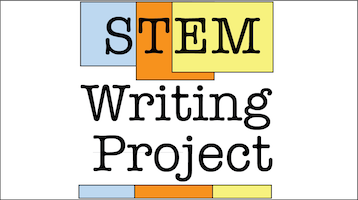STEM Writing Project
Writing Guide
 Scientific Writing Resource Guide
Scientific Writing Resource Guide
The Challenge
Undergraduates have more than a decade of experience reading and writing narrative and expository prose. Yet we often incorrectly assume that they understand the goals and elements of scientific communication. We need to remember that typical students in 100-level biology courses have had minimal prior experience with this genre. Put another way, scientific literature has levels of complexity and hidden meaning rivaling Shakespeare, James Joyce, or Dostoyevski, which undergraduates are trying to navigate using primary-school reading experiences.
This impacts how we should be teaching scientific writing. For instance, if students have not seen or read a primary literature article before, we should not be surprised when they do not know the difference between primary, secondary, and lay scientific literature, or that they struggle to distinguish between them when choosing sources for citation. Another example: very likely they have been indoctrinated to think the scientific method is a series of steps to follow more or less blindly. If the boxes are checked off, the written work conforms to the expectations of the scientific method. They do not understand WHY scientific literature is organized in a particular way, nor do they know what that the goals are for that organizational structure.
Our Approach
We developed a standardized Scientific Writing Resource Guide that students and instructors use across multiple 100-level college biology courses. Unlike many commercially published writing guides, ours tells students the WHY behind what they are expected to do. Our data indicate that, when students know the rationale behind writing requirements, they are easier to remember and implement.
Parts 1-6 of the Guide are written assuming that we are talking directly to individual undergraduate students. They describe the logic and mechanics of writing a lab report that conforms to the Council of Science Editors (8e) standards for primary literature, with some revisions that make writing easier for students just starting out.
- How scientific literature is organized; how to read primary literature.
- Hypotheses and experimental design
- The parts of a scientific report
- Analyzing, summarizing, and reporting data; basic statistics & data visualization
- Using and citing sources; using an electronic reference manager
- Beyond the basics: building a writing toolbox
Part 7 has resources for instructors only. The Appendices have three case studies of student experiments (including full datasets) with examples of well- and poorly-written reports. The materials for instructors and appendices can be deleted from the students' edition of the Guide if desired.
Available Resources
The Guide is published under terms of a Creative Commons CC-BY-SA-NC 4.0 license. Users can download the text files, images, and all supporting R code from a GitHub repository, then revise the Guide to meet their local needs. We also invite collaborators to contribute revisions, bug fixes, or new chapters back to the repository.
To make the Guide easier to share and maintain, we produced it in Markdown. This lightweight markup language lets authors write well-structured text once, then produce documents in multiple formats. Learn more about how to edit the Guide here.
| Resources | Links |
| Official QUBES Resource Publication | Link to resource |
| Live interactive e-book (uses current GitHub version) | Website |
| Editable files on GitHub | Full repository; Folder of RMD & HTML files |
| Static copy of the SWP Writing Guide | MS Word document (July 26, 2022 edition) HTML (ZIP archive) (July 26, 2022 edition) PDF (January 5, 2022 edition) |
Looking Ahead
We invite collaborators to help us refine the Guide further, to post feedback on their experiences using the Guide, and contribute new pages to the Guide on topics not currently included. Also, check the list of To Do items for the Writing Guide project. Let us know if you want to take on one or more.
Where to Learn More
Comments
There are no comments on this entry.
